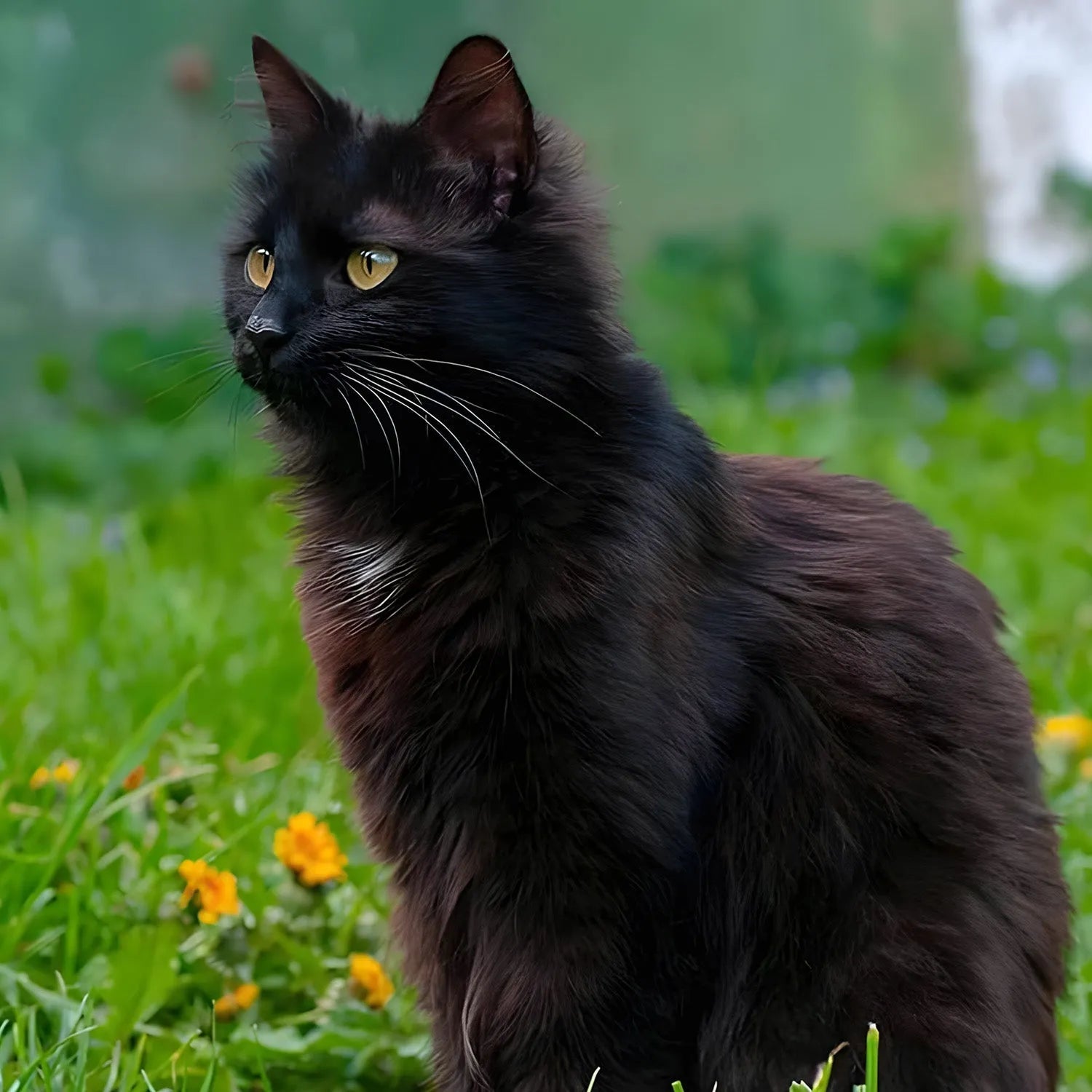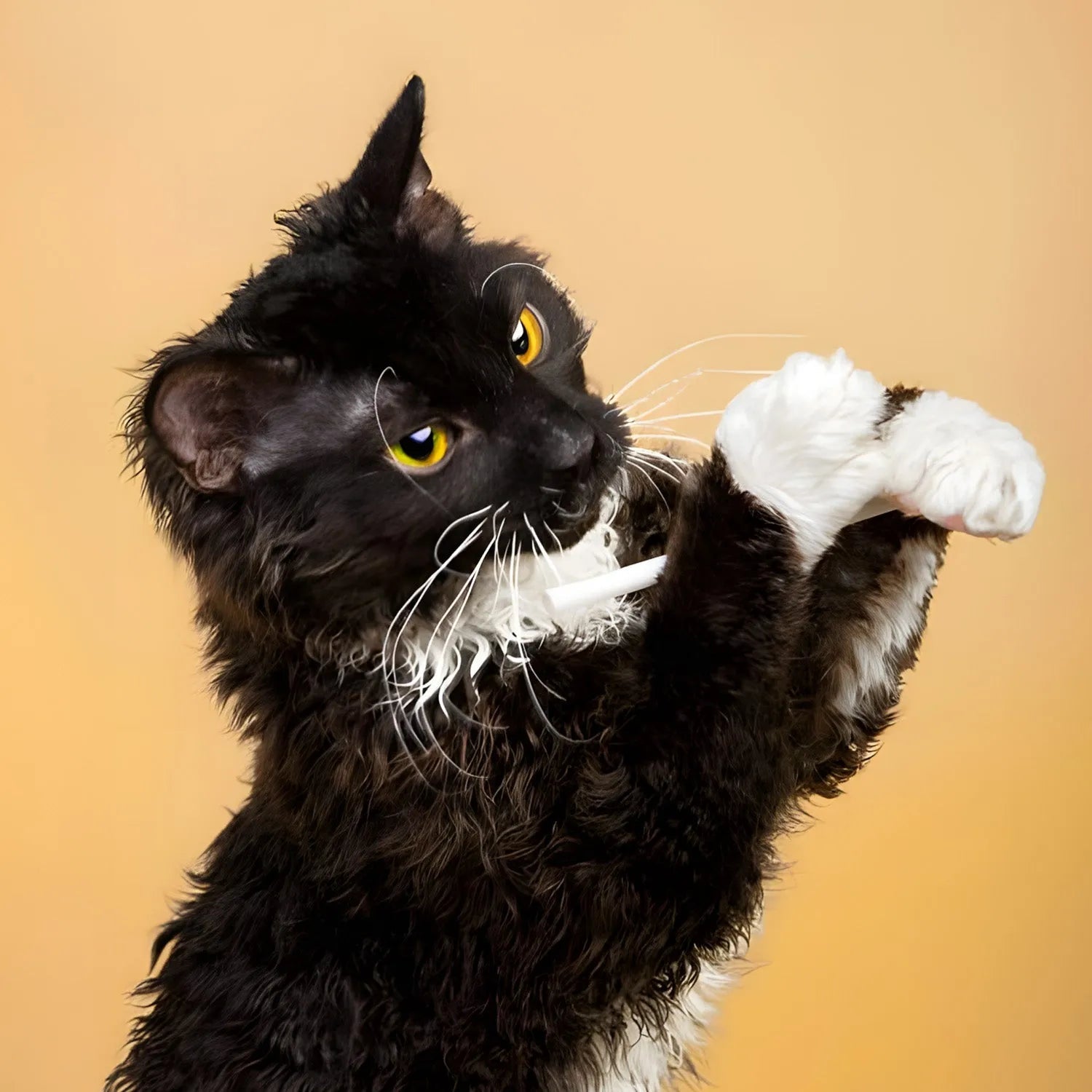Bengal Cat: The Exotic and Energetic Feline
Introduction
The Bengal cat is a stunningly beautiful breed, known for its striking wild appearance and dynamic personality. With a coat reminiscent of a leopard and a playful, adventurous nature, the Bengal cat is a popular choice for those looking for a unique and active feline companion. In this blog, we’ll explore the Bengal cat’s lifestyle, behavior, grooming needs, trainability, and how it interacts with humans and other pets.
Ratings (1-5)
-
Environmental Adaptability: 4
-
Food Consumption: 4
-
Need for Companionship: 5
-
Trainability: 5
-
Tolerance of Children: 4
-
Ease of Domestication: 3
History and Origins
The Bengal cat breed was developed in the United States during the 1970s and 1980s by breeding domestic cats with the Asian leopard cat, a small wild feline species native to Asia. The goal was to create a domestic cat with the striking appearance of a wild cat but with the temperament of a pet. The breed was named "Bengal" after the scientific name of the Asian leopard cat, *Prionailurus bengalensis*. Over time, the wild traits were bred out, leaving behind a cat with an exotic look and a playful, affectionate nature. The Bengal cat was officially recognized as a breed by major cat registries in the late 1980s and has since become one of the most popular cat breeds in the world.
Physical Characteristics and Colors
Bengal cats are medium to large-sized cats with a sleek, muscular build. They have a distinctive coat that is short, dense, and incredibly soft to the touch. The most striking feature of the Bengal cat is its unique coat pattern, which is reminiscent of a wild leopard. The coat can come in various colors, including brown, snow, and silver, with patterns such as rosettes, marbling, or spots. The breed’s eyes are large, almond-shaped, and can be green, gold, or blue, adding to its overall exotic appearance. The Bengal's tail is thick and medium-length, and its paws are large and rounded, contributing to its powerful, agile appearance.
Lifestyle and Behavior
Bengal cats are known for their high energy levels and playful nature. They are highly active cats that enjoy running, jumping, climbing, and playing. Bengals are intelligent and curious, often finding ways to entertain themselves if left alone, though they prefer interactive play with their owners. This breed is also known for its love of water, which is unusual for cats. Bengal cats are often seen playing with water, whether it’s in a sink, a bathtub, or even their water bowl. Despite their wild appearance, Bengal cats are affectionate and enjoy spending time with their human companions. They form strong bonds with their owners and thrive in environments where they receive plenty of attention and stimulation.
Trainability and Intelligence
Bengal cats are highly intelligent and can be trained to follow commands, perform tricks, and even walk on a leash. They are quick learners and respond well to positive reinforcement techniques such as treats, praise, and play. Bengals enjoy mental challenges, making them adept at learning new things, whether it's fetching, sitting on command, or navigating an agility course. Their intelligence also makes them highly adaptable to changes in their environment, and they often enjoy learning new routines or exploring new spaces. However, their high intelligence also means they can become bored easily, so it’s important to provide plenty of mental and physical stimulation.
Social Behavior and Human Interaction
Bengal cats are social animals that form strong bonds with their human families. They are known for their affectionate nature and enjoy being involved in every aspect of their owner's life. This breed is often happiest when it is in the company of its human companions, and it will follow its owners from room to room, often engaging in play or simply observing. Bengals are particularly known for their vocal nature, and they will communicate with their owners through a variety of sounds, including chirps, meows, and purrs. They thrive in homes where someone is usually around to keep them company, and they can become lonely or destructive if left alone for long periods.
Compatibility with Children and Other Pets
Bengal cats are excellent companions for children, especially those who are active and enjoy playing with pets. Their playful and energetic nature makes them a great match for families. However, due to their high energy levels, they may not tolerate rough handling, so it’s important to teach children to interact gently with them. Additionally, Bengal cats tend to get along well with other pets, including dogs, as long as they are properly introduced. Their sociable and adaptable nature allows them to integrate well into multi-pet households, but their strong prey drive means they may not be the best fit for homes with small animals like hamsters or birds.
Grooming and Care
The grooming needs of a Bengal cat are relatively minimal due to their short coat. Weekly brushing is usually sufficient to keep their coat looking shiny and to remove any loose hairs. Regular dental care, ear cleaning, and nail trimming are also important to maintain their overall health. Despite their low-maintenance grooming needs, Bengal cats enjoy the bonding time that grooming sessions provide, and it can be a great way to strengthen the bond between cat and owner. Because of their active nature, Bengals also require regular playtime and exercise to keep them happy and healthy.
Health and Lifespan
Bengal cats are generally healthy, but like all breeds, they can be prone to certain genetic conditions. These may include hypertrophic cardiomyopathy (a form of heart disease) and progressive retinal atrophy (a degenerative eye condition). Regular veterinary check-ups and a balanced diet are essential to maintain their health. With proper care, Bengal cats can live up to 12-16 years. Regular monitoring and preventive care are important to ensure a long and healthy life for your Bengal cat.
Environmental Adaptability
Bengal cats are adaptable and can thrive in various living environments, although they do best in homes where they have plenty of space to explore and play. They are known for their resilience and can adjust well to different climates and household settings. However, they do best in environments where they can receive plenty of attention and interaction from their owners. Their adaptable nature makes them well-suited to a wide range of living conditions, but they require a stimulating environment with plenty of opportunities for physical activity and mental engagement.
Feeding Requirements
A balanced diet is crucial for maintaining the Bengal cat's health and energy levels. High-quality cat food that is rich in protein is recommended, as Bengals are highly active and require a diet that supports their energy needs. Fresh water should always be available. Consult your veterinarian for specific dietary recommendations based on your cat's age, weight, and health needs. Monitoring their diet to prevent obesity is essential, as Bengal cats can be prone to overeating if not properly managed.
Conclusion
The Bengal cat is an exotic and energetic breed that brings excitement and companionship to any household. Their intelligence, playful nature, and striking appearance make them wonderful pets for families and individuals who can provide the attention and stimulation they crave. If you're looking for a cat that combines the beauty of the wild with the affection of a domestic pet, the Bengal might be the perfect fit for you.
For more information about other cat breeds and pet care tips, stay tuned to our blog!
References:
-
Johnson, S. (2021). "The Development and Characteristics of the Bengal Cat." *Journal of Feline Studies*, 35(3), 201-215.
-
Richards, A. (2020). "Caring for Your Bengal Cat: A Comprehensive Guide." *Cat Lover's Magazine*, July issue, pp. 30-40.
-
Lee, M. (2019). "Health and Wellness in Bengal Cats." *Veterinary Journal*, 79(2), 123-137.


